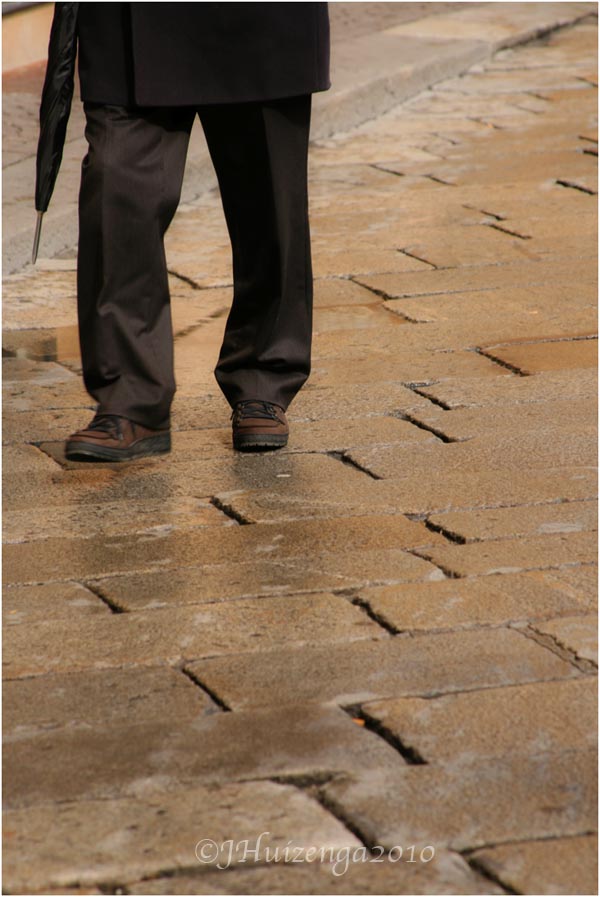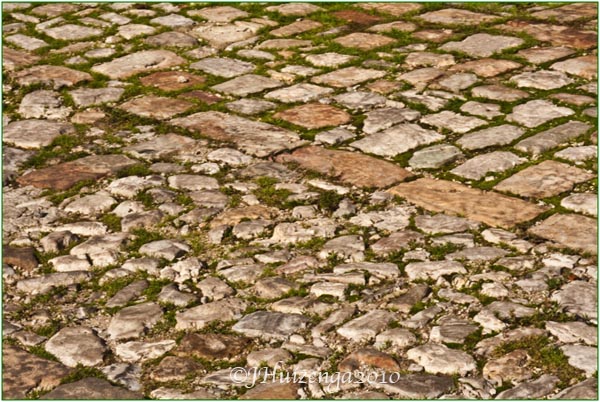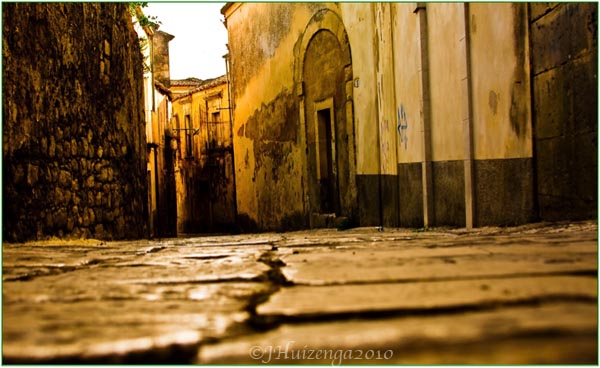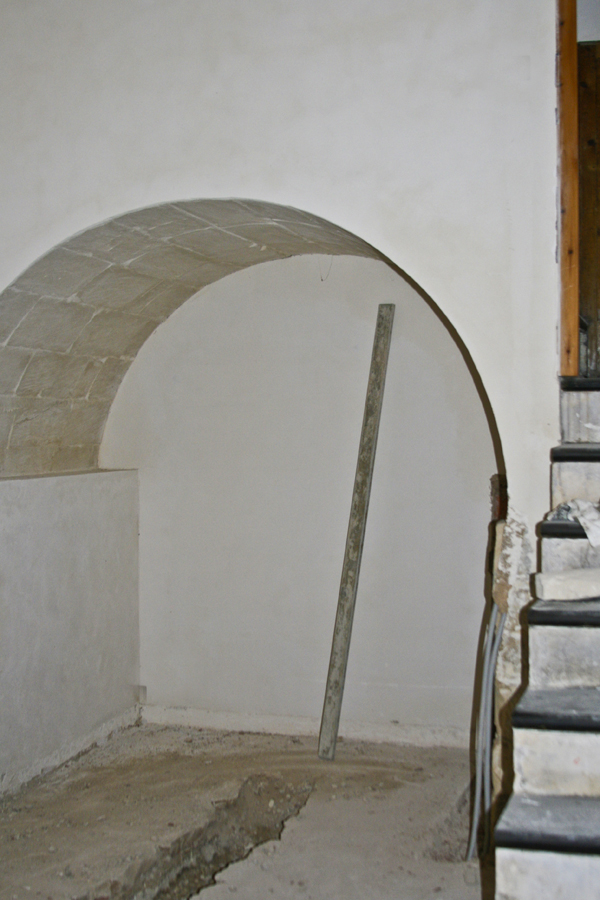June 6, 2010
“I know you,” said a tall man with olive eyes as we crossed paths last week.
I racked my brain. Had we met?
“We drink coffee at the same bar,” he laughed. “All stranieri, strangers, are famous here.”
I cringed.
“Do you know Louise from England?”
I shook my head.
He pointed to a low, crumbling building adjacent to the cathedral and pulled out a ring of keys. “The church is trying to sell this building. Do you want to see inside?”
The two dank rooms inside were pigeon-pooped and depressing, but I saw two old chairs I liked in a pile of junk.

“I gift them to you, Signora.”
I politely protested.
“But they’re worthless!” he said.
Old Sicilian church chairs—seats lovingly caned with a thick, rough twine—have been replaced by pews.
Heading up the stairs to my house, a salvaged chair under each arm, I felt another rush of Sicily-love.
There was also regret. Why had he let them go so lightly?
***

ADDENDUM: It’s true that the little church chairs were riddled with wood-munching bugs—tarli, as they’re called here. But there’s a simple solution. My friend Roberta (left) taught me the antitarlo recipe: Buy a syringe at a farmacia, don pink plastic gloves, fill the syringe with toxic goo, plunge it into each and every pinhole (there were millions), then wrap the chair, Christo-like, in plastic and let rest for 2 weeks. Unwrap and enjoy with a glass of Nero d’Avola.
Click to leave a comment.
Click to subscribe.
May 29, 2010
I’ve cooked up the idea of installing in my kitchen a tile baseboard (called battiscopa, literally hit-broom) with a floral design. It’s going to be more than twice as high as a normal Sicilian baseboard.
When I explain my brilliant idea to the project manager, he knits his shaggy eyebrows into a scowl and gives his head a sad shake.
“No, Gianna.”
I get a whiff of his strong aftershave.
“Perché no?” Why not?
He shoots me a look you might give a very slow learner.
“Non si fa in Sicilia.” It’s not done in Sicily.
Oh.
I search for the right words. I tell him the ceiling is very high “e a me piace i fiori.” And to me pleases the flowers.
“Non si fa,” he repeats with steely authority. It’s simply not done.
Does he think one non-traditional battiscopa will throw the whole island out of whack?
This isn’t the first time I’ve run smack into the Wall of Tradition. Sicily is a culture that values the Old Way, the Way of Granny.
I adore this about the island, really I do. In fact, I’m restoring my house in the Way of Granny. Mostly. I’m preserving and enhancing whatever is old. The floor tiles I’ve chosen for the kitchen are traditional Sicilian ones made in Palermo. The floral tiles are also an old Sicilian motif.
But I just want to tweak things a bit here and there, add my own little spin.
In the end, I defy the project manager. The new stonemason masterfully installs the butterscotch-colored daisies while crooning Sicilian love songs.
“Beh, non e brutta,” the project manager concedes when he sees the battiscopa. “It’s not ugly.”

***
Click to comment.
Click to subscribe.
***
Readers, can you help me? Will you consider voting for my Sicily photograph in the Islands Reader’s Choice poll? Here’s the link. The link will bring you to a photo I shot of a Sicilian woman in Capo Passero (in the extreme southeast corner of Sicily). You can vote by clicking on *My Favorite* underneath the photo. (I could win a photography course and you could win a camera!) GRAZIE MILLE! (To see thumbnails of all 22 photos in the competition, click this link.)
May 20, 2010
Shoes wear out fast in Sicily, and so do feet.

I buy every Dr. Scholl’s pain relief product on the market. I slather callus goop onto the soles of my feet. I wrap them in moleskin. I’m gellin’.

But I gladly suffer the pain. Because nothing can beat the sheer romance of old cobbles.

When your heels hit these medieval stones, they sing! (The stones that is, not so much the heels.)

I love the texture of cobbles under my toes, and the shine rubbed in by generations of hooves, wheels, and feet.

***
Readers, can you help me? Will you consider voting for my Sicily photograph in the Islands poll? Here’s the link. The link will bring you to a photo I shot of a Sicilian woman in Capo Passero (in the extreme southeast corner of Sicily). You can vote by clicking on *My Favorite* underneath the photo. (I could win a photography course and you could win a camera!) GRAZIE MILLE! (To see thumbnails of all 22 photos in the competition, click this link.)
***

Click to leave a comment.
Click to subscribe.
April 15, 2010
It’s that time of year again. The ripe time. The jasmine is sweet; cows low in verdant pastures; a soft breeze blows from Africa.
It’s time for Sicilians to begin doing what they most love doing: eating gelato.

Sicilians claim to have invented ice cream by mixing citrus syrups with the snow of Mount Etna. According to Mary Taylor Simeti, though, the reality is more complicated.


The place to go for ice cream in Southeast Sicily—besides the wonderful Caffè Sicilia in Noto—is Gelati Divini in Ragusa Ibla. You won’t find any icky Baskin Robbin’s flavors (no Cotton Candy, Chocolate Chip Cookie Dough, Oreo Cookies ‘n Cream). These are Old World gelati for grown-ups: Rose Petal, Cream of Marsala, Jasmine, Honey of a Thousand Flowers, Fennel, Persimmon, Moscato d’Asti, Nero d’Avola. Rosaria, the charming proprietess, will always let you sample before you order.
 Gelati Divini Sicilian gelato has much less fat than American ice cream, so indulging is not really a sin.
 Chocolate and Vino Cotto (Cooked Wine) Taylor Simeti also recommends the Gelateria Cappadonia in tiny Cerda as the best gelateria in western Sicily. (Cerda is about an hour’s drive east of Palermo). In season, they make an artichoke gelato! Do you have a favorite gelateria in Sicily? Or maybe a great Sicilian gelato recipe? Please share!

Click to comment.
Click to subscribe.
April 12, 2010

…
Into the cramped space under this arch—hardly big enough for a closet—I plan to stuff an entire bathroom: sink, toilet, shower, heat rack, mirror, towel racks. The project manager is insisting on a bidet (he says no Italian can live without one), but you’d have to put your foot in the bidet to squeeze into the shower.
This is part of the cantina, the old wine cellar that is slowly morphing into guest quarters.
I plan to expose as much stone as possible inside and above the arch. The back wall, which needs to be waterproof, will be a sea of tiny tiles. Tiles the blue of a storm-tossed Ionian Sea.
Beastly expensive tiles.
I knew nothing about the cost when I ordered. I didn’t bother to ask the price. I figured: they’re just tiles made right here in Italy, not some expensive import. How much could a few little tiles cost?
The boxes finally arrived from Milan, along with the bill. My eyes popped. I had to read it over and over. I could feel my face on fire.
“Well, you ordered glass tiles,” the project manager says. What did you expect?”
I did notice how lustrous they were, but I had no idea they were glass.
I thumb through the instruction manual that comes with the tiles. The installation looks complicated. “Are you sure the mason is up to this?” I ask the project manager. The mason seems to have perfected the art of banging and pounding, but I’ve never seen him do anything delicate with his thick, calloused hands. Do I trust him with my treasures? Has he ever installed anything of the sort?
“Non preoccuparti,” says the project manager, winking. Don’t worry.
This is the favorite phrase down here. It usually means trouble.
But who am I to argue?
***
..
Click to comment.
Click to subscribe.
|
Subscribe to Baroque Sicily
Copyright reserved -
All photos and text on BaroqueSicily are Copyright of Jann Huizenga ©2009-2015, unless otherwise noted. Material may not be copied or re-published without written permission. All rights reserved.
|




















